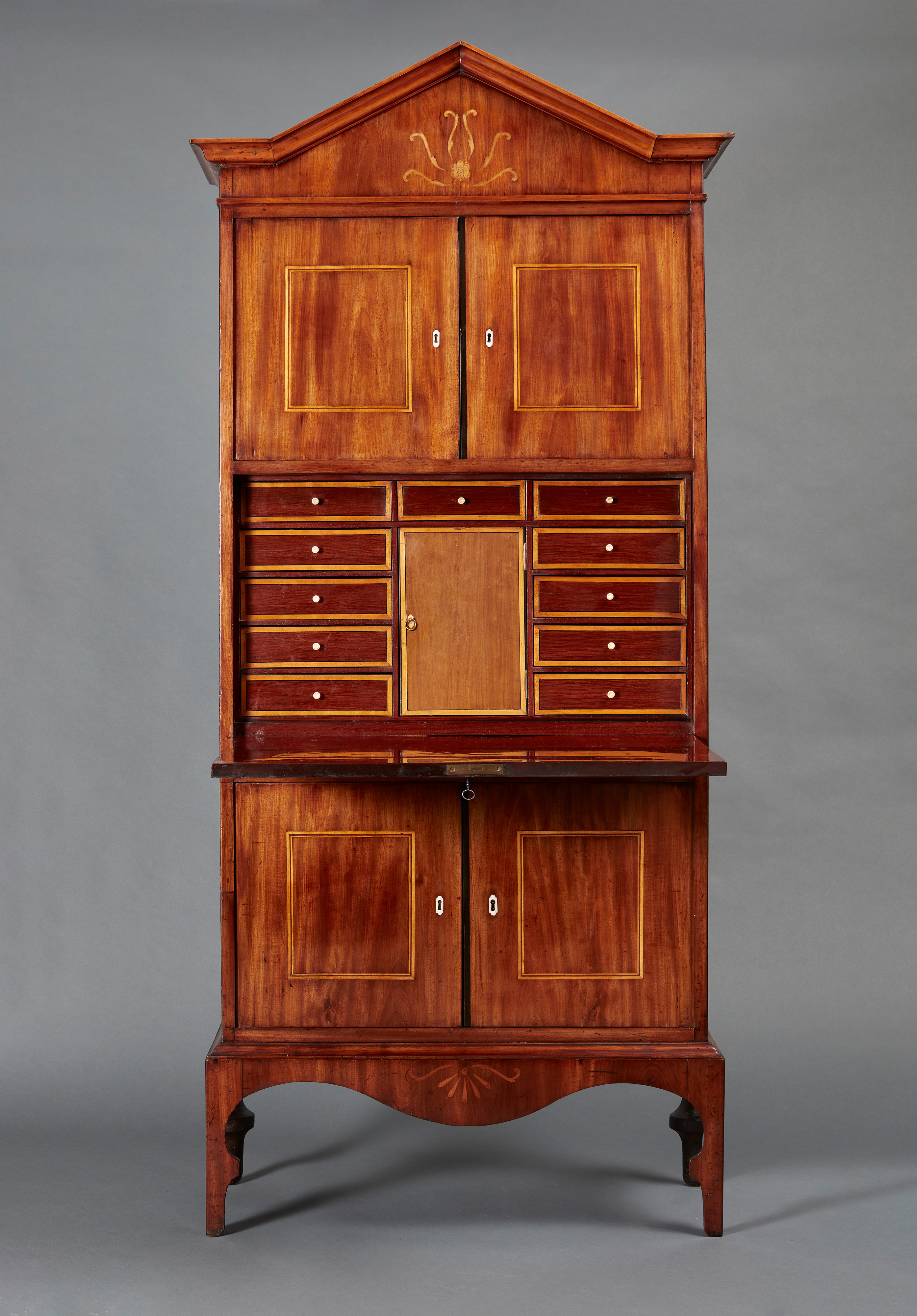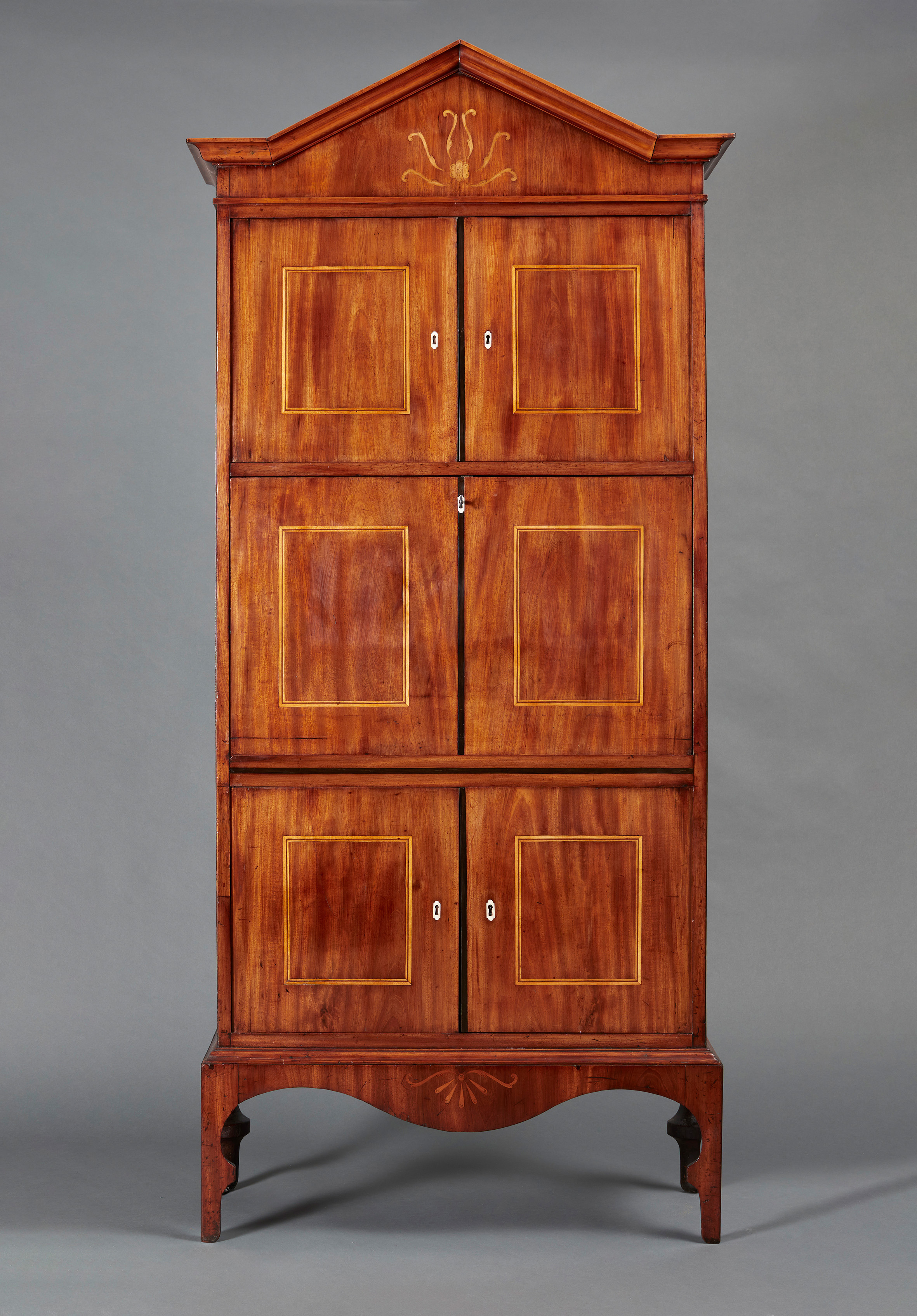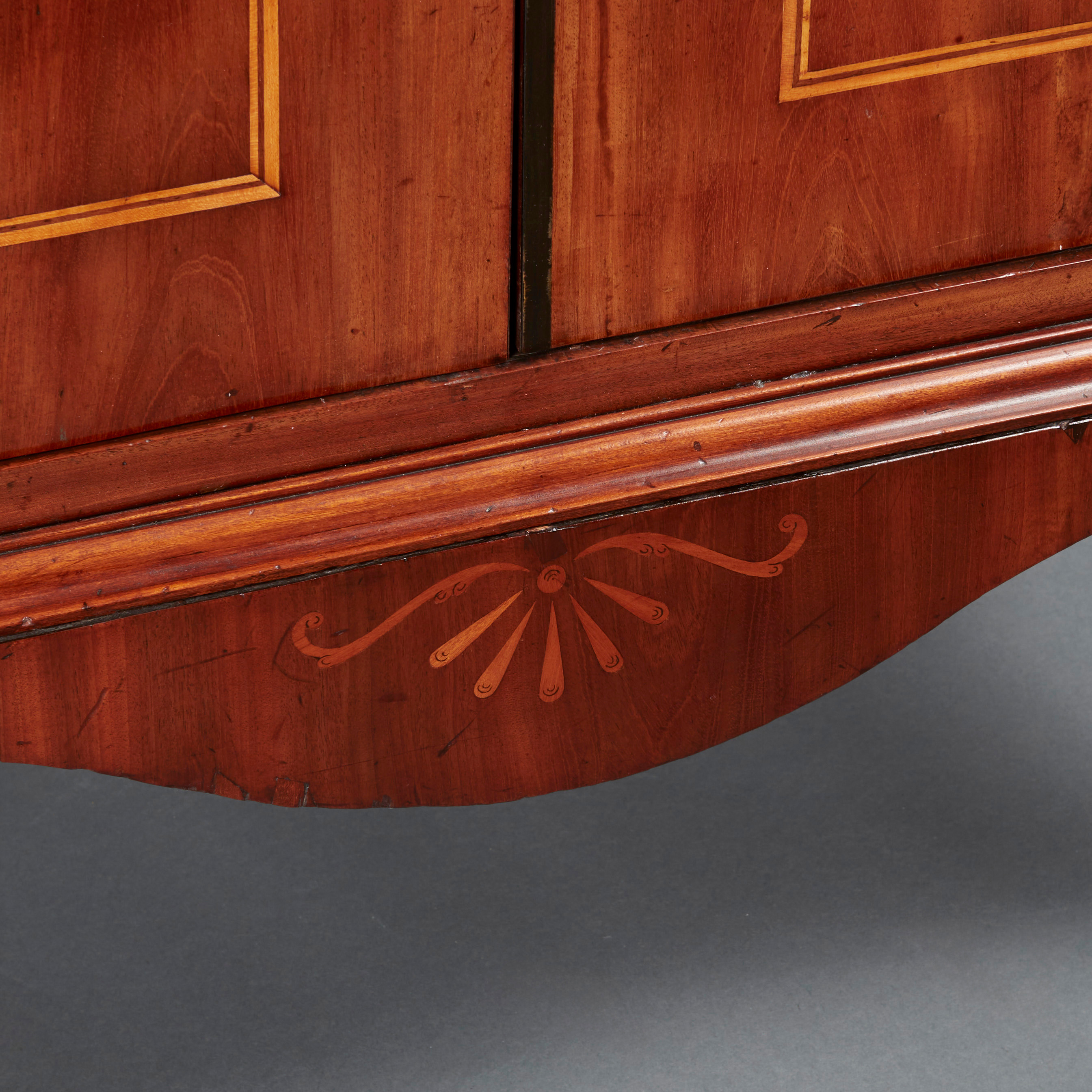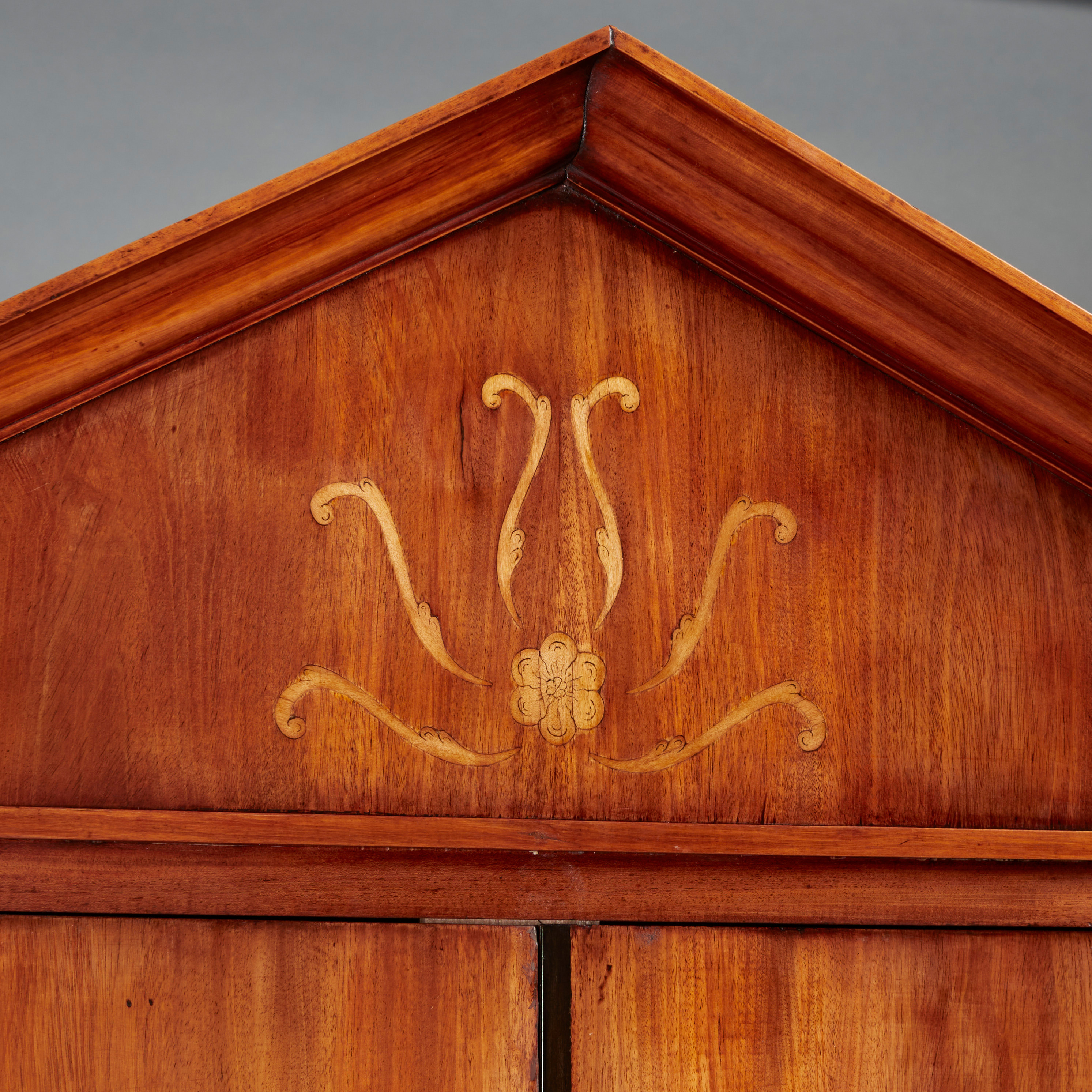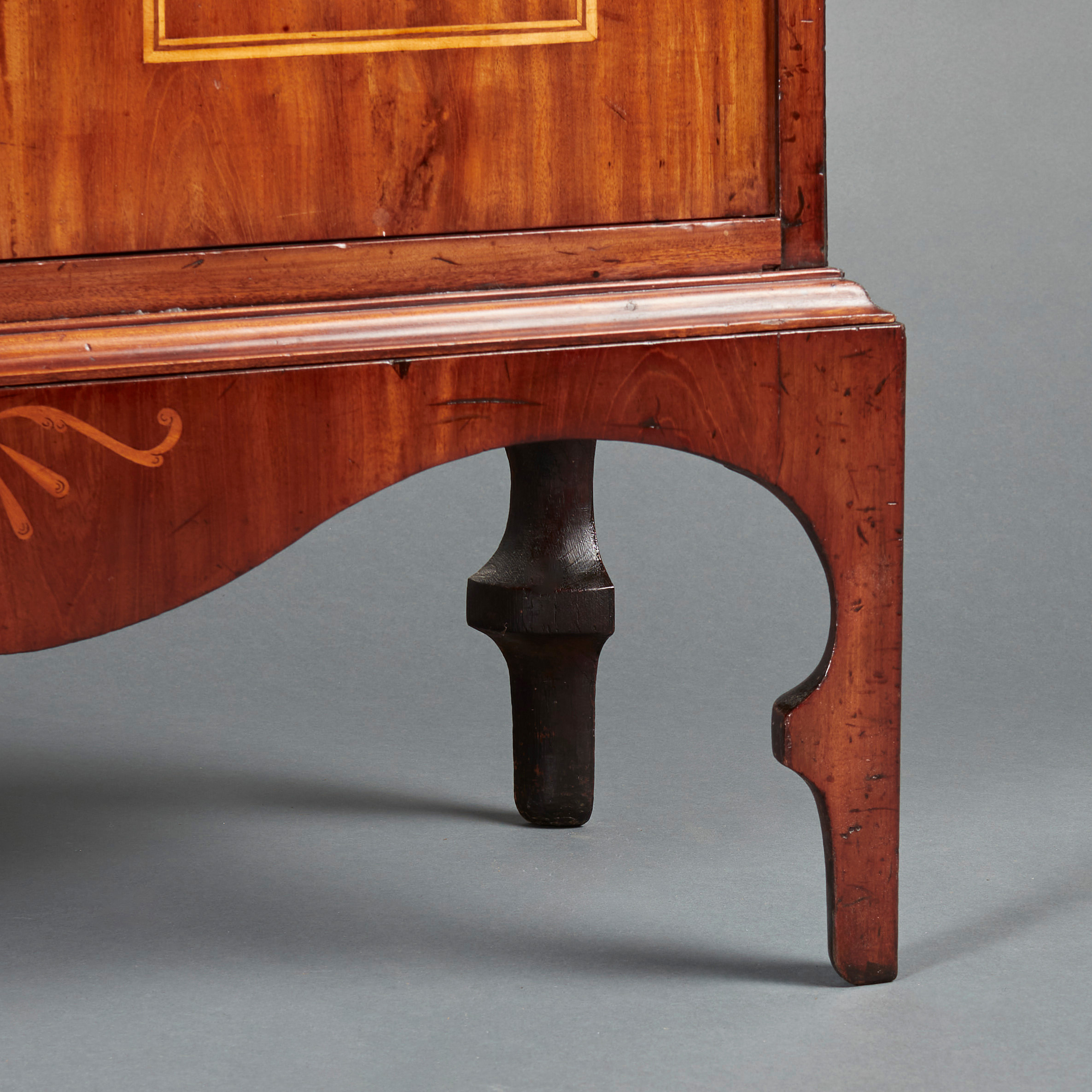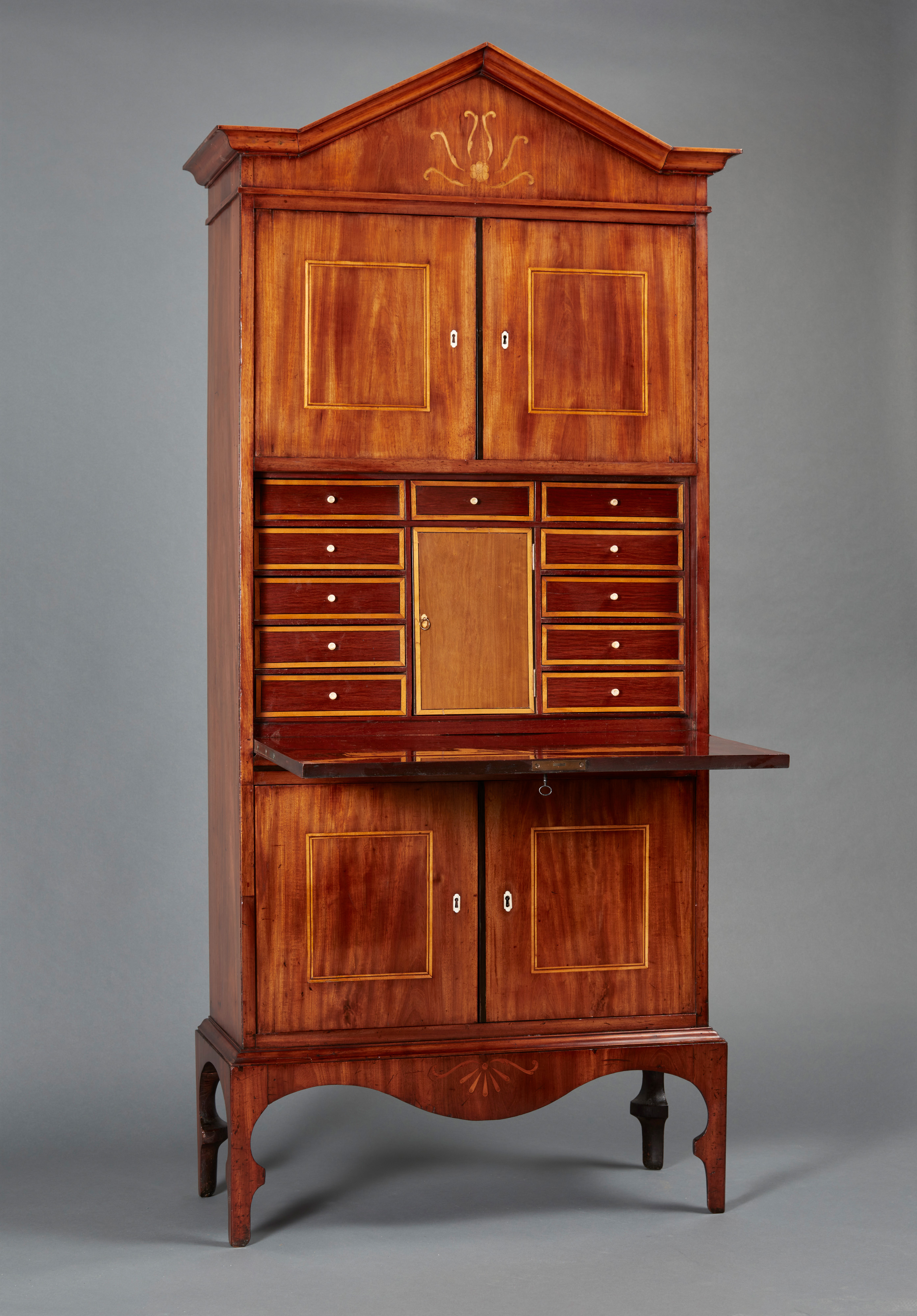Secretaire a Abattant
Nicolai Abildgaard (1743-1809)
Copenhagen, 1800-1802
Mahogany veneer, inlay in maple
Height: 192 cm (75.5 inch) | Width: 87 cm (34.25) | Depth: 38 cm (15 inch)
Provenance: Danish merchant and shipowner Johann Friedrich Tutein (1757 – 1853) for his newly built townhouse on the corner of Vimmelskaftet and Badstuestræde in Copenhagen.
Ref No: 3367
The slender secretaire on an unusual high stand with four curved legs dived into quarters, the frame with a central inlaid palmette motif. The fall down writing flap, enclosing a fitted interior with numerous drawers, above and below are two doors enclosing one shelf. The top of the secretaire in form of a classical triangular pediment, the center of which is decorated with an inlaid stylized anthemion. The entire front is very plain and geometrical, divided into six panels inlaid with rectangular fields in light wood.
The design of this mahogany secretaire is based on classical Roman and Greek models, in this case the bookcases that were portrayed on frescoes, reliefs and Roman gold glass. As secretaires were not known in Antiquity, Abildgaard designed his secretaire as a cupboard though in such a way, that the two centre doors are actually a fall front writing top. The carved turned underframe is inspired by Etruscan footstools, which were known especially from reliefs and had been reproduced in contemporary prints. Abildgaard designed this piece of furniture far more in accordance with ancient tradition than did the other furniture designer of the day.
The most important (and avantgarde) piece of the furniture Abildgaard designed in the first decade of the 19th century, is this secretaire, which marks a real renewal in relation to the secretaires that constituted the master’s test for the members of the guild of cabinetmakers at this time. Compared with these, this secretaire is a very light piece of furniture that does not follow the contemporary fashion towards classical architectural decorations such as columns, pillars, architraves, etc. which often endow such pieces.
Nicolai Abraham Abildgaard (11 September 1743 – 4 June 1809) was a leading Danish Neoclassical painter who also designed (mostly for his own use) elegant Grecian furniture. Some of the pieces were quite archaeologically accurate, being copied from 5th-century BCE vases and decorated with painted panels imitating red figure vase painting. He also designed furniture for Crown Prince Christian Frederick of Denmark. He was strongly inspired by his travels to Rome, where he stayed from 1772 to 1777. He also took a trip to Naples in 1776 with Jens Juel. In addition to his studies of genre and history paintings he was also interested in other artistic disciplines, like architecture, wall paintings and decorative arts and expanded his knowledge of mythology, antiquities and anatomy.
In his 1961 short film Danish Design, Jørgen Roos tells how in the late 18th century the Danish artist Nicolai Abildgaard travelled to Greece and Italy in search of inspiration from classical art, and came back not only with artistic impetuses, but with classical furniture concepts he began to reproduce: ”Abildgaard had become Denmark’s first furniture designer”.
Danish artists’ furniture in the early 19th century – The Dream of an Golden Age
The so-called Danish artists’ furniture originated in the 19th century, when it was not uncommon for artists to work in more than one field. As a result, many artists also designed and decorated furniture, often being inspired by antiquity when designing their furniture. At the end of the 18th century, Europe was strongly influenced by the excavations in the ancient cities of Herculaneum and Pompeii, which had a great impact thanks to the illustrated excavation reports. Copies of the furniture of ancient Greece and Rome increasingly appear in the homes of polite society across Europe. In France, it was the cabinetmaker George Jacob and his sons among others, who created furniture after the antique, in London it was Thomas Hope and later in Germany, it was Karl Friedrich Schinkel. This period in Denmark is known as the first “Golden Age” and was dominated by the works of Nicolai Abildgaard, Gottlieb Bindesbøll, and H.E. Freund who were designers of furniture and interiors in the Pompeiian style.
Provenance:
- Private collection of art historian Hans Edvard Nørregaard-Nielsen (1945–2023) .
- Auction Bruun Rasmussen, 1987; no. 499, Lot 1091, from the collection of descendants of Friedrich Tutein
- commissioned (as a pair) by the Danish merchant and shipowner Johann Friedrich Tutein (1757 – 1853) for his newly built townhouse on the corner of Vimmelskaftet and Badstuestræde in Copenhagen
Literature:
- Bregnhoi, Line/ Raabyemagle, Hanne, Abildgaard som Arkitekt – former og farver, 2019.
- Gelfer-Jørgensen, Mirjam, Herculaneum paa Sjælland, Klassicisme og nyantik i dansk møbeltradition, 1988.
- Gelfer-Jørgensen, Mirjam, The Dream Of A Golden Age, Danish Neo-Classical Furniture 1790-1850, 2004.
- Swane, Leo, Abildgaard, Arkitektur og Dekoration, Copenhagen, 1926.
- Waagepetersen, Christian, Danske Møbler før 1848, Copenhagen, 1980, p. 423, fig. 557.

